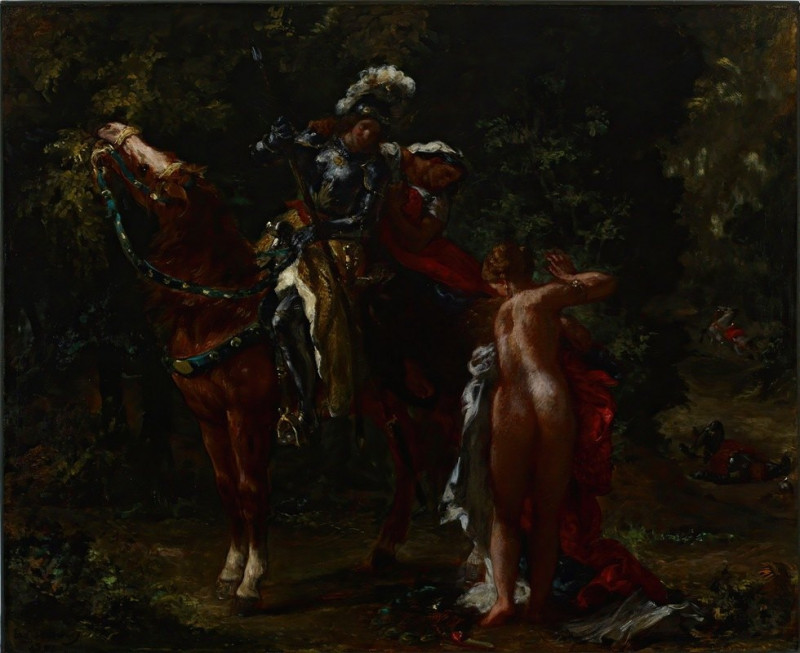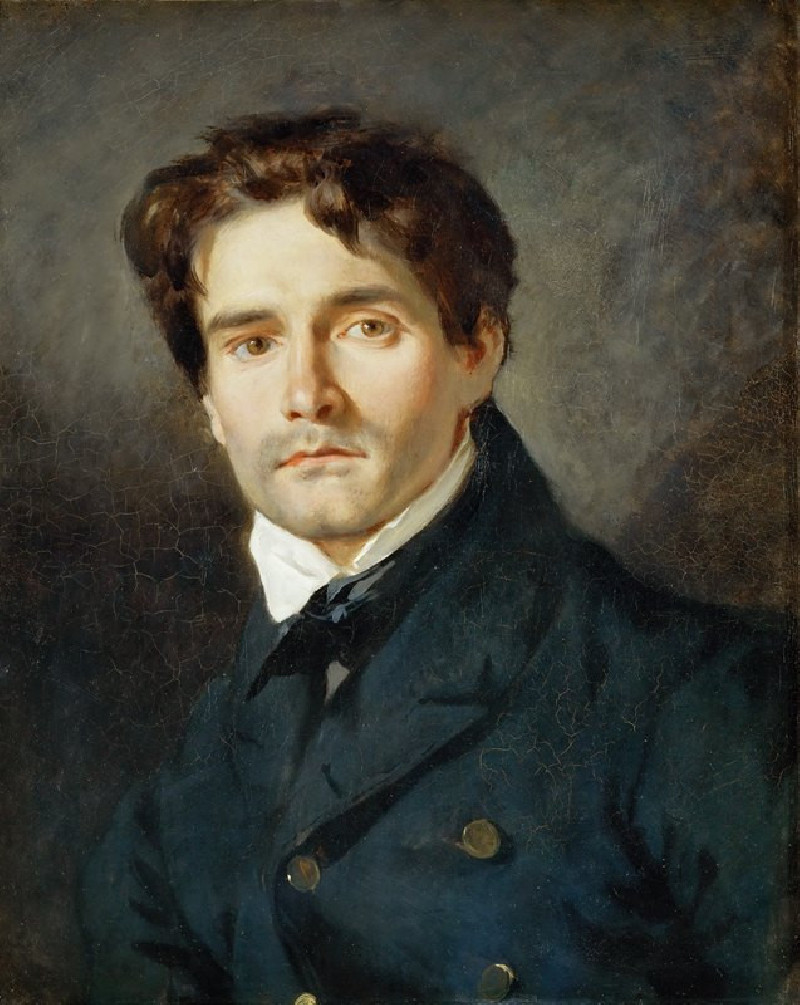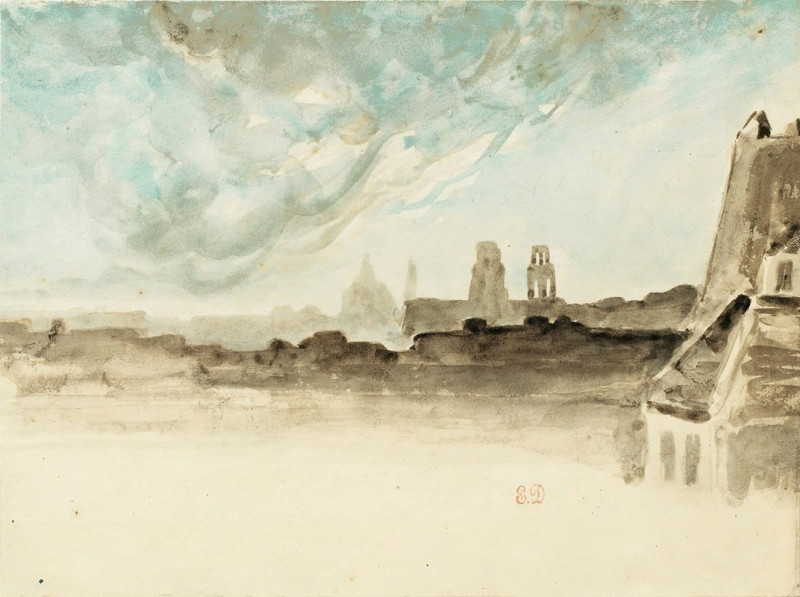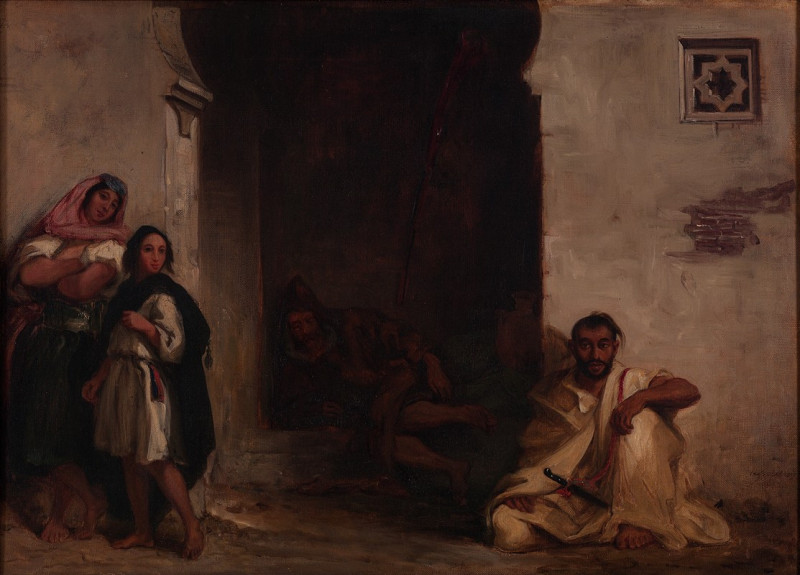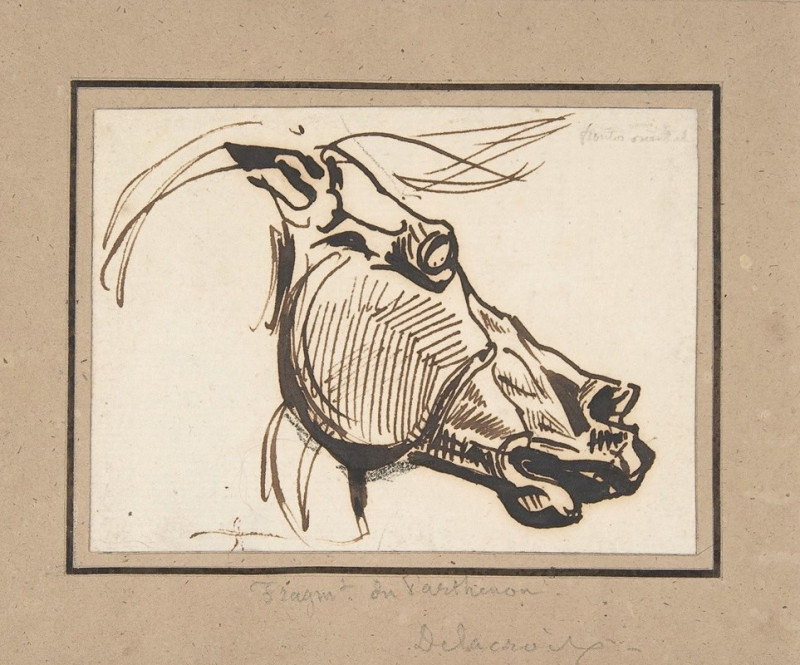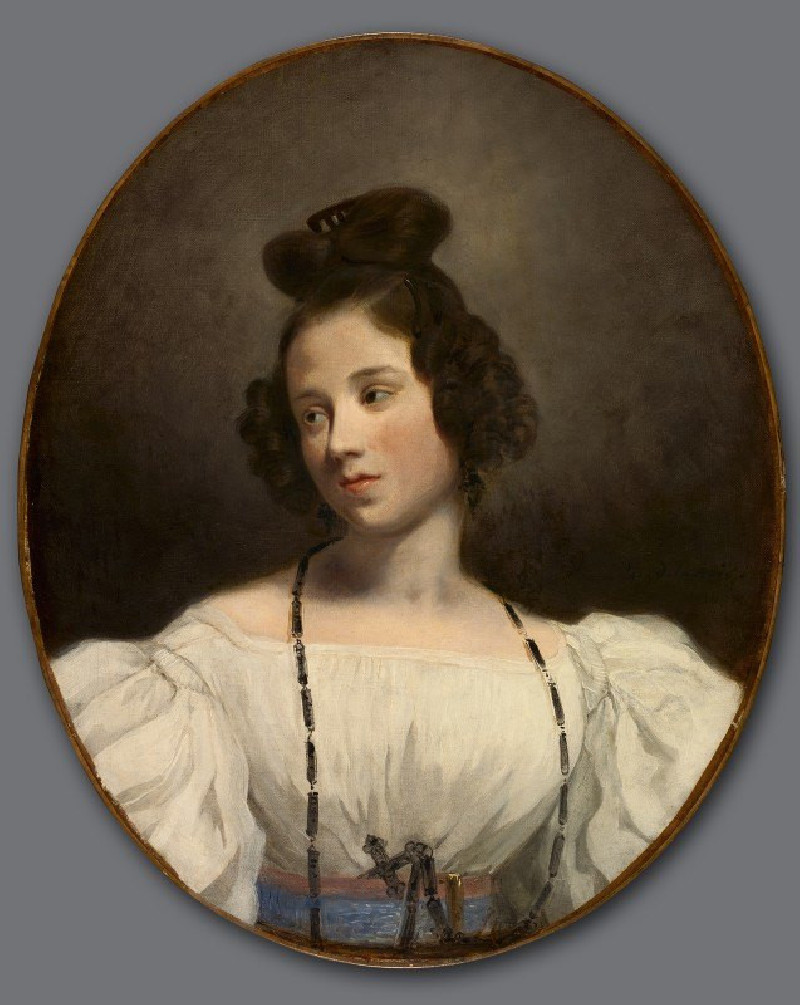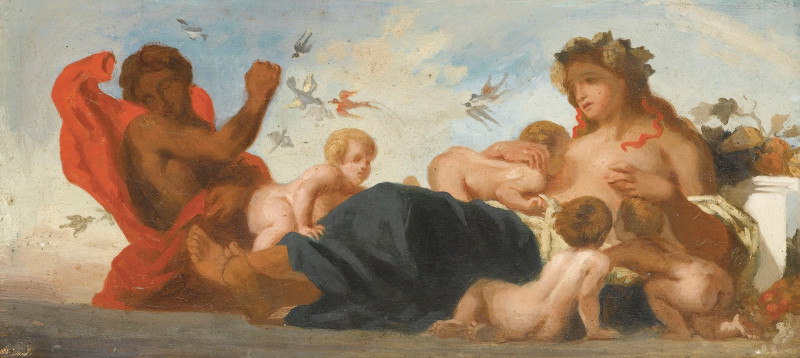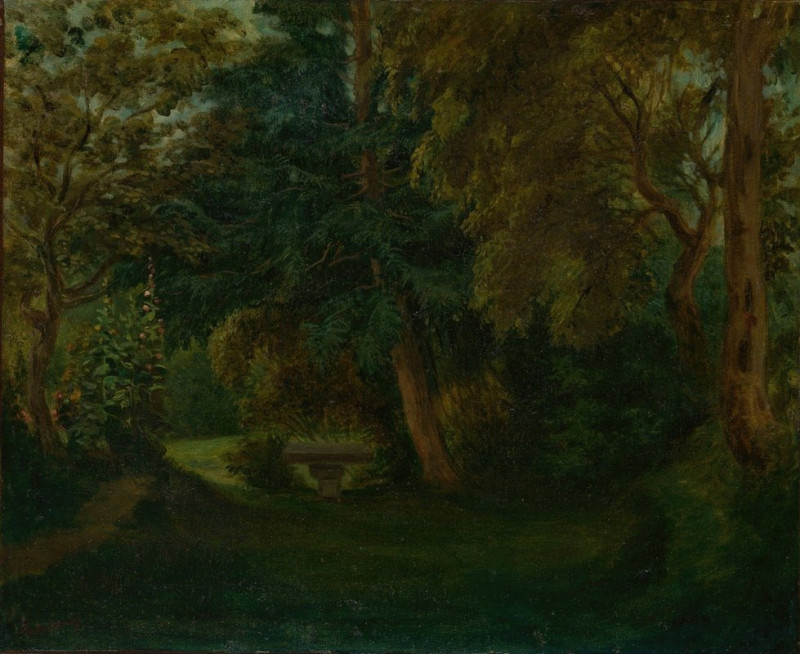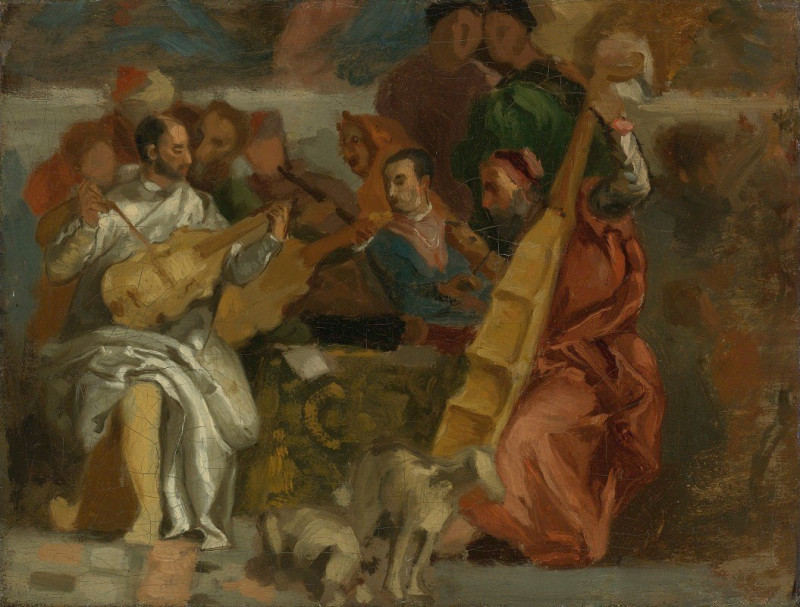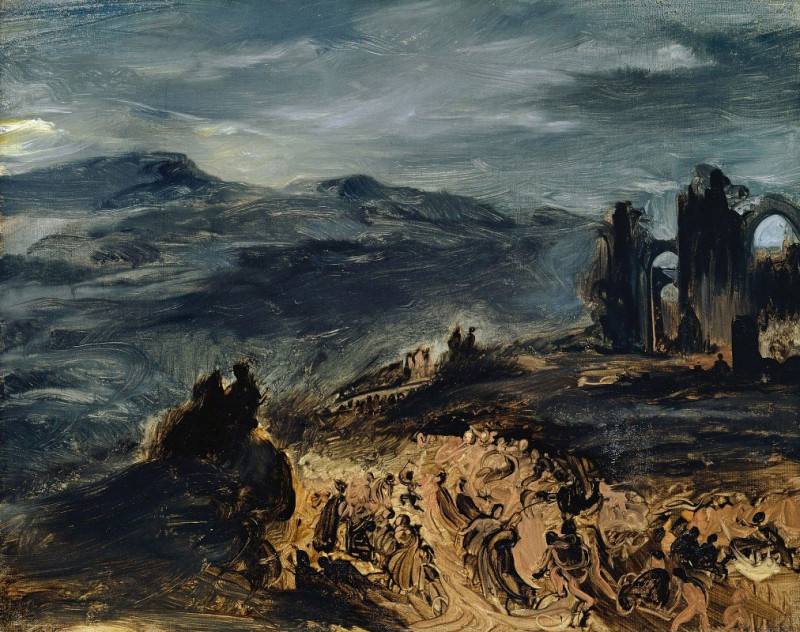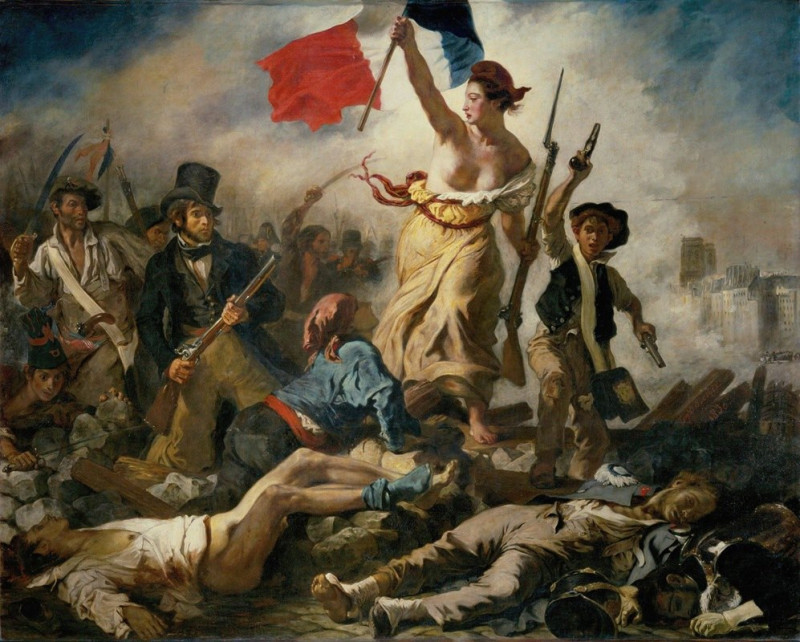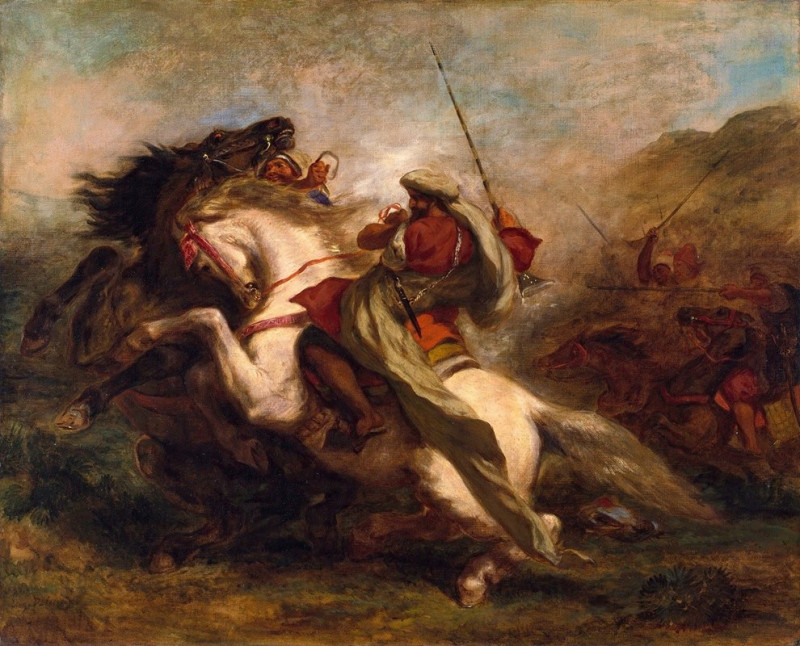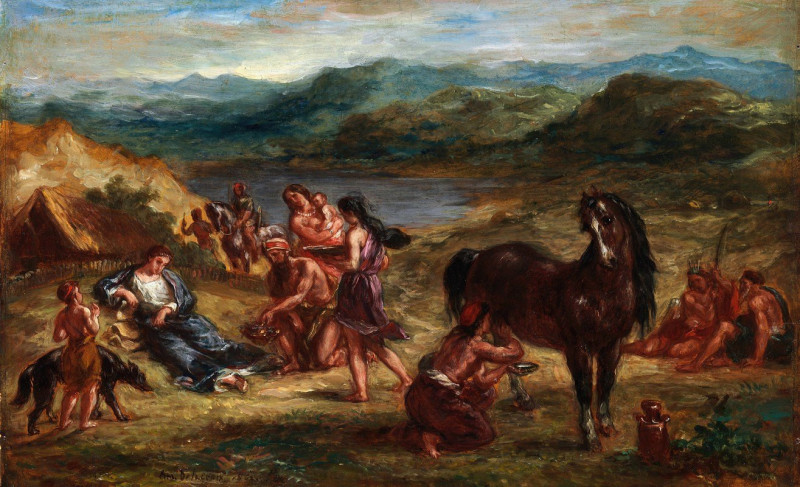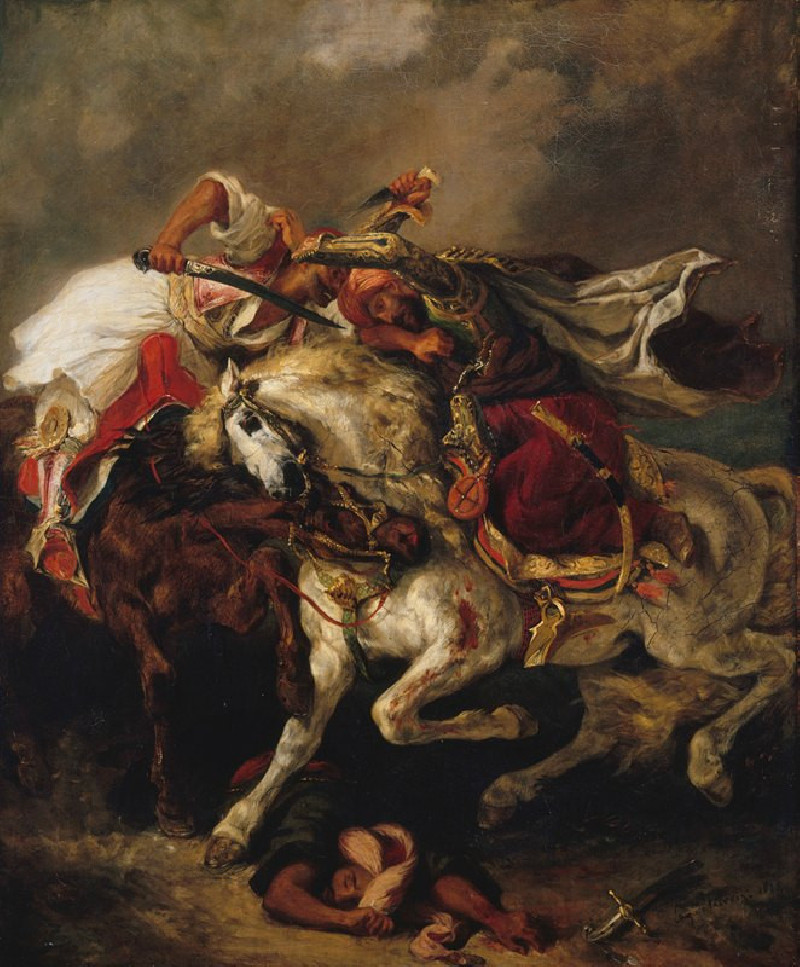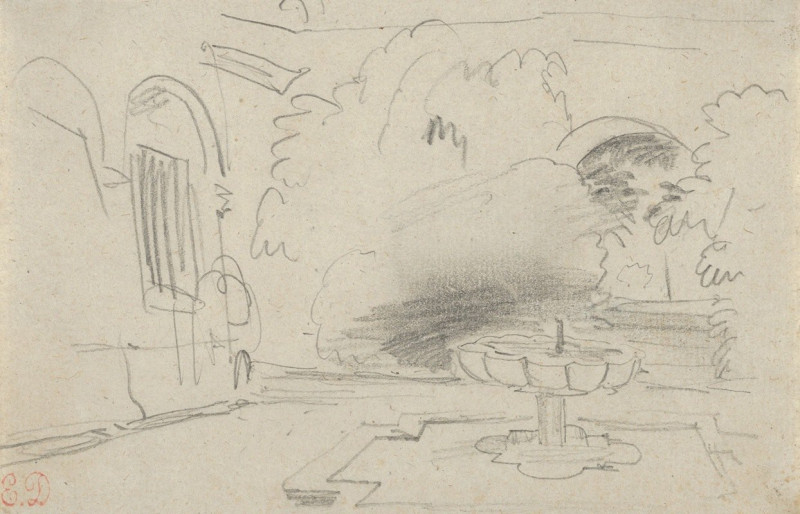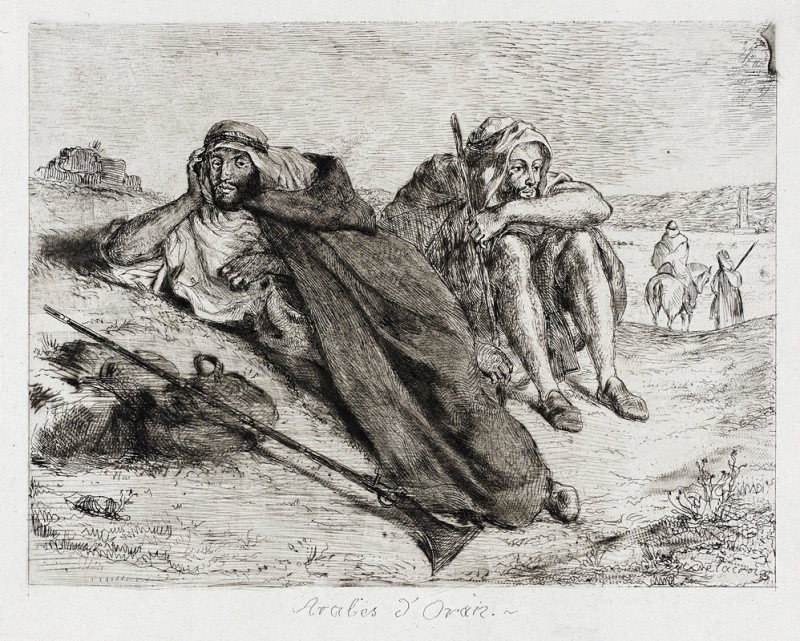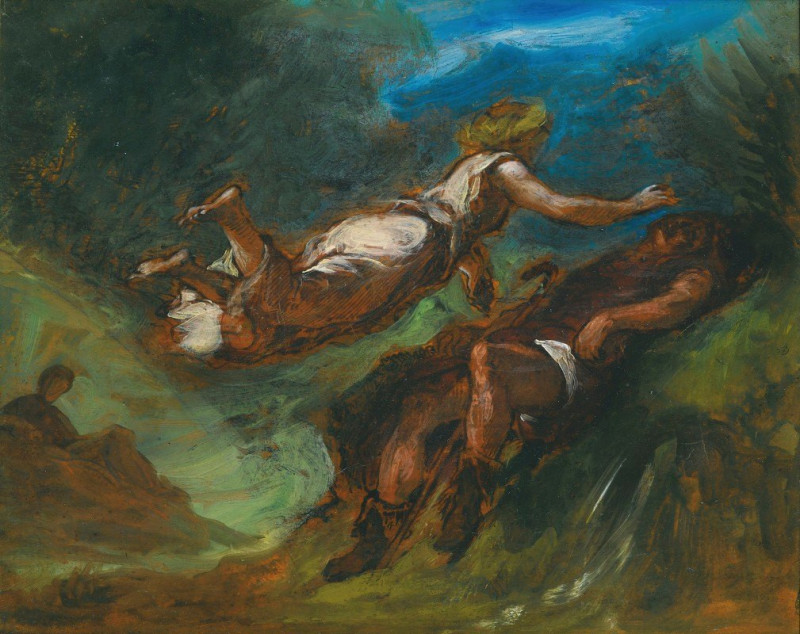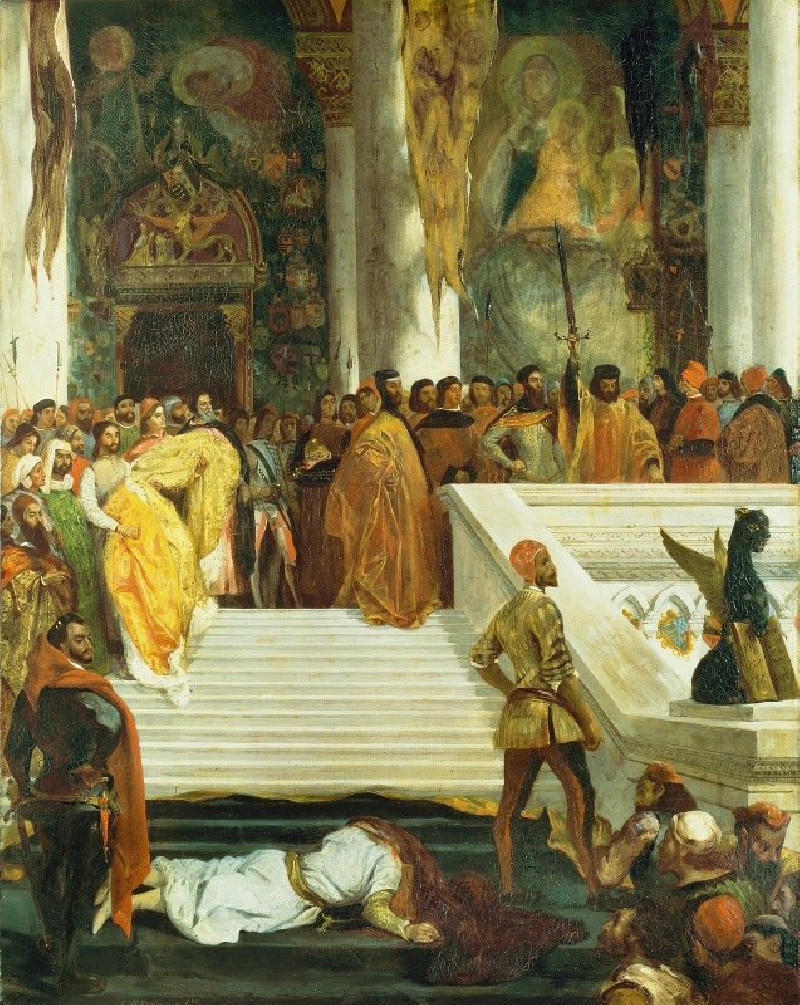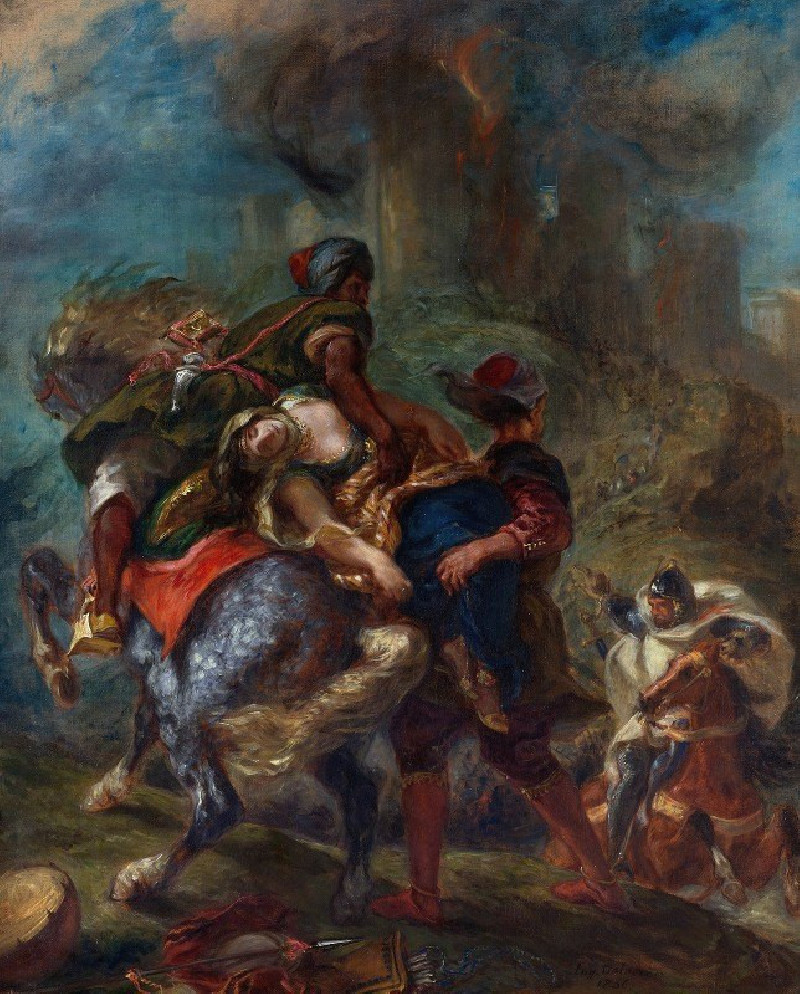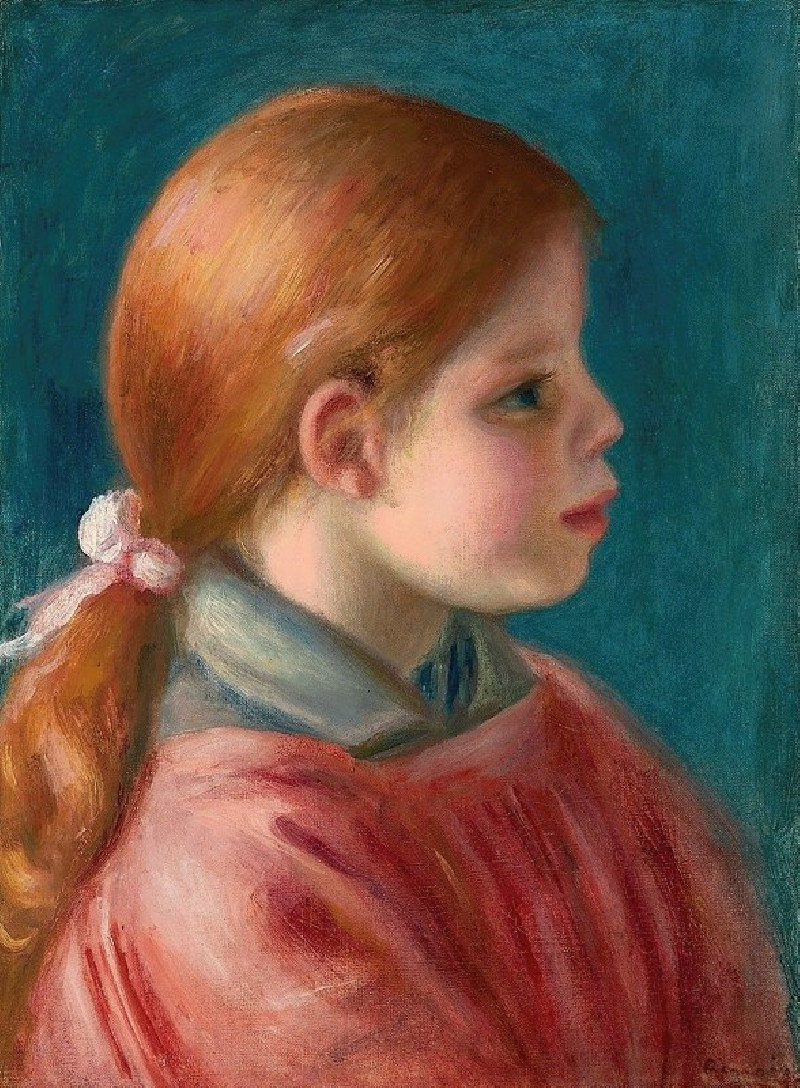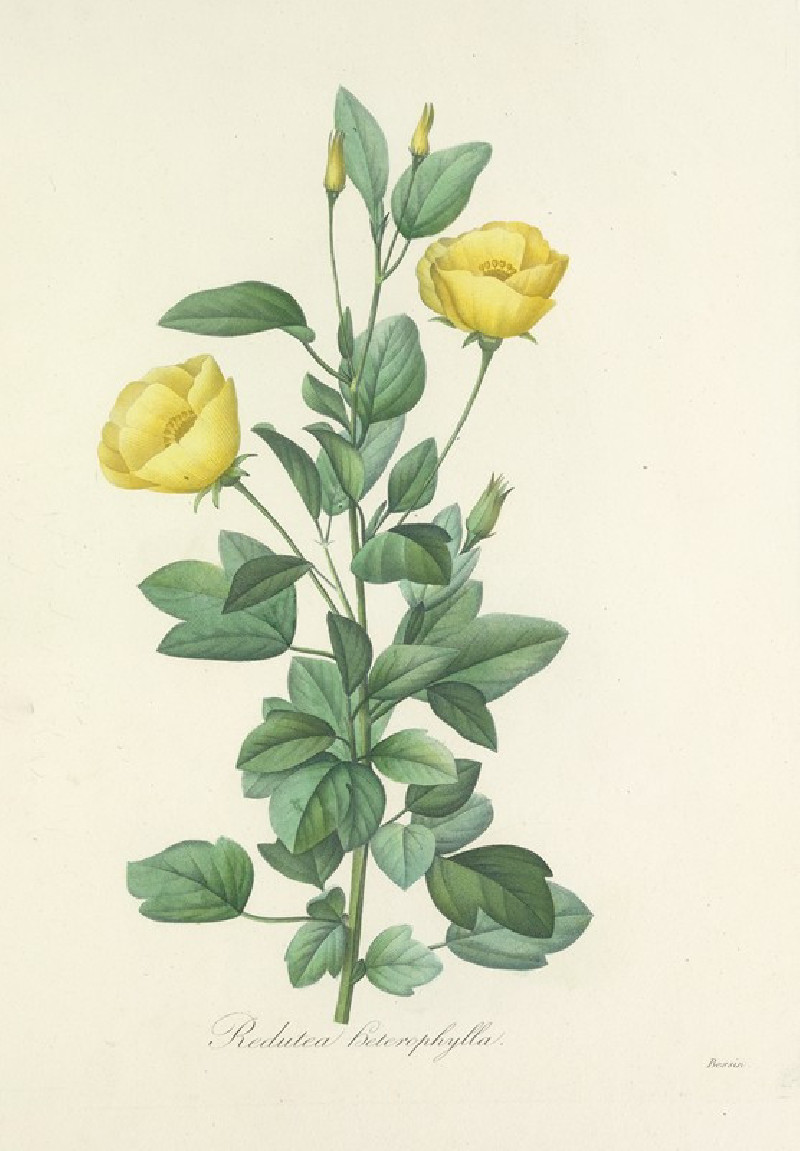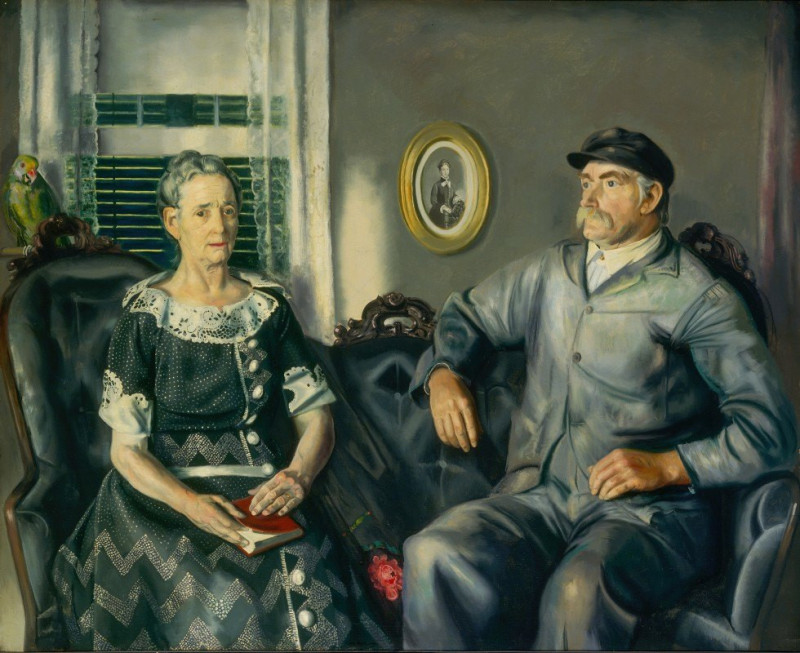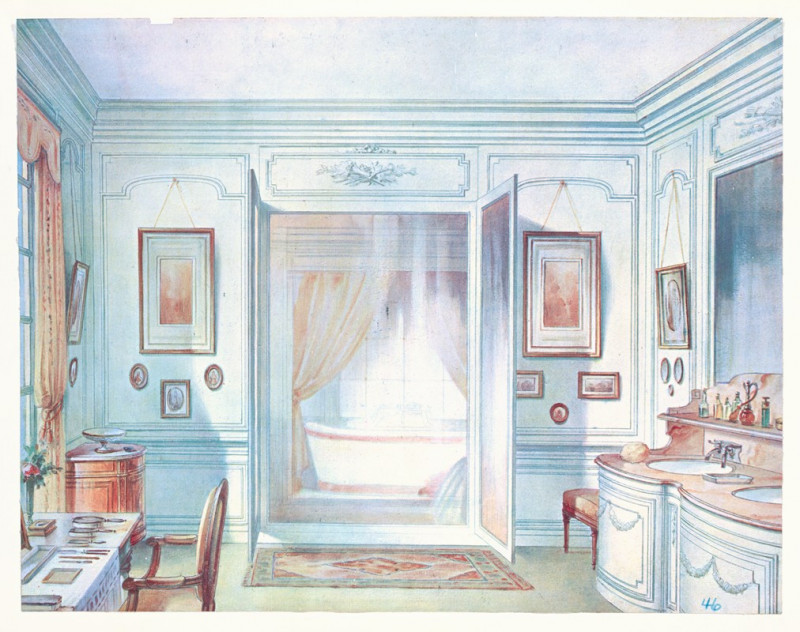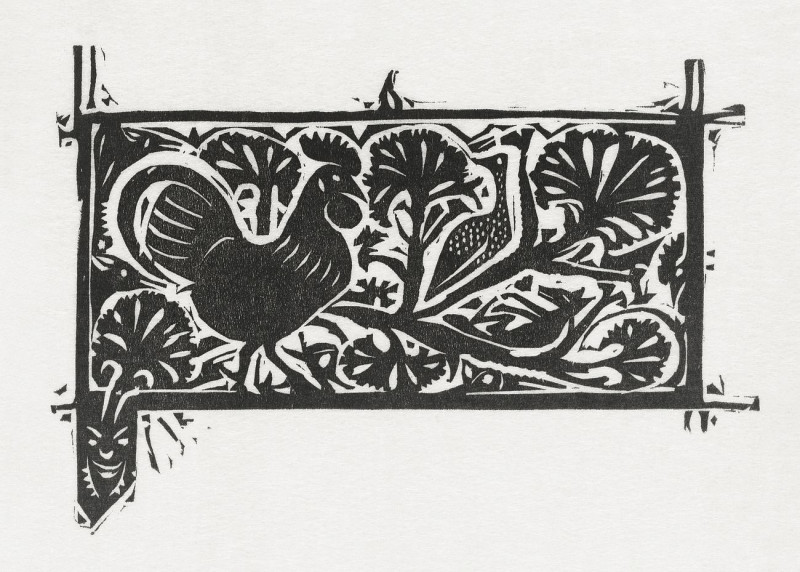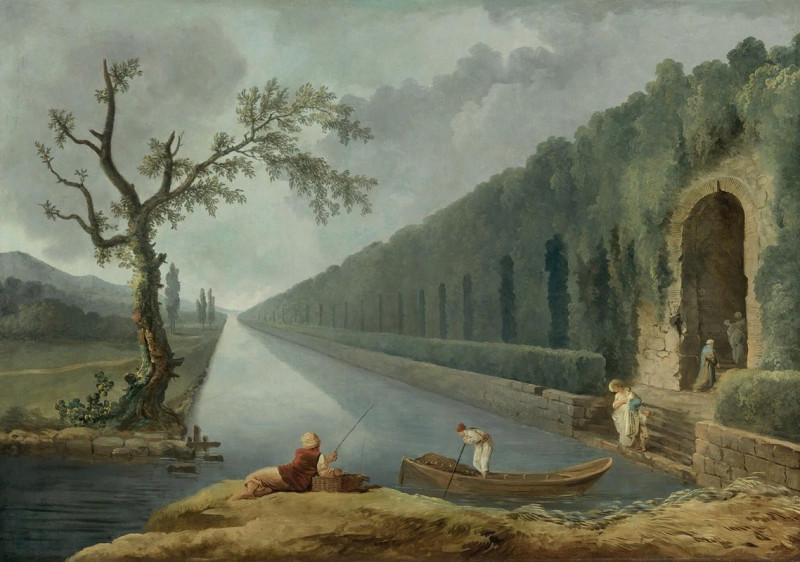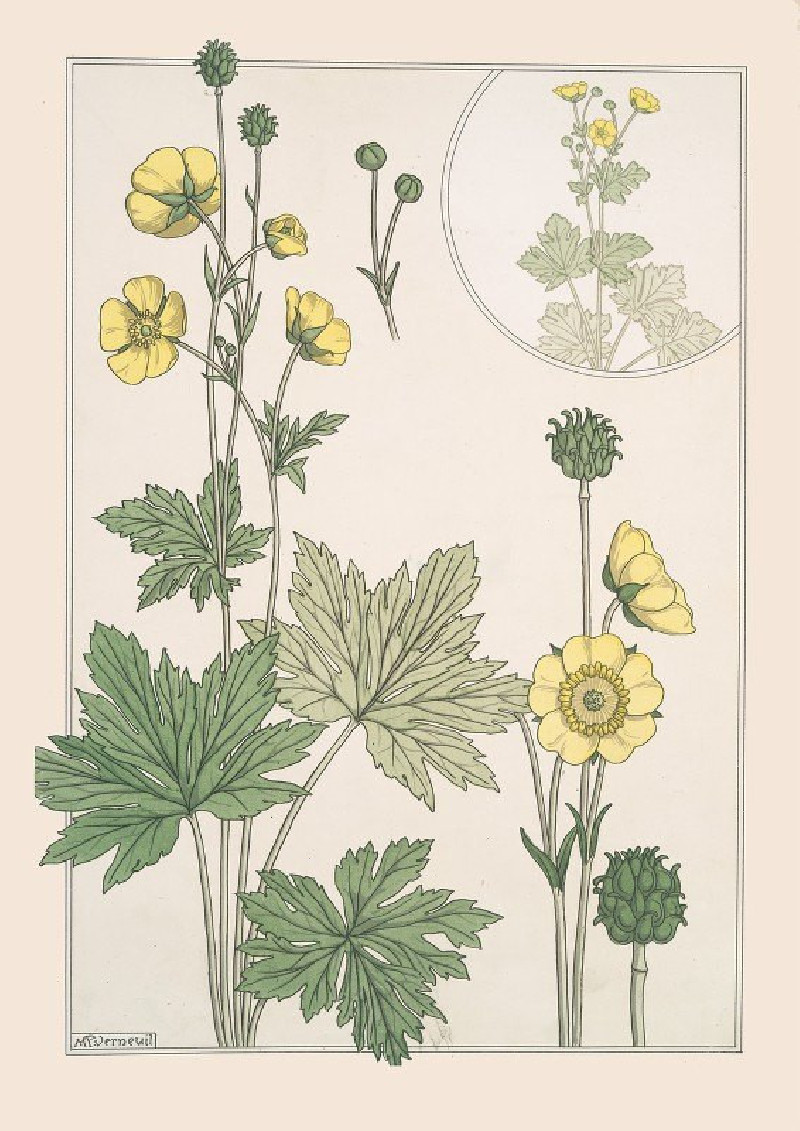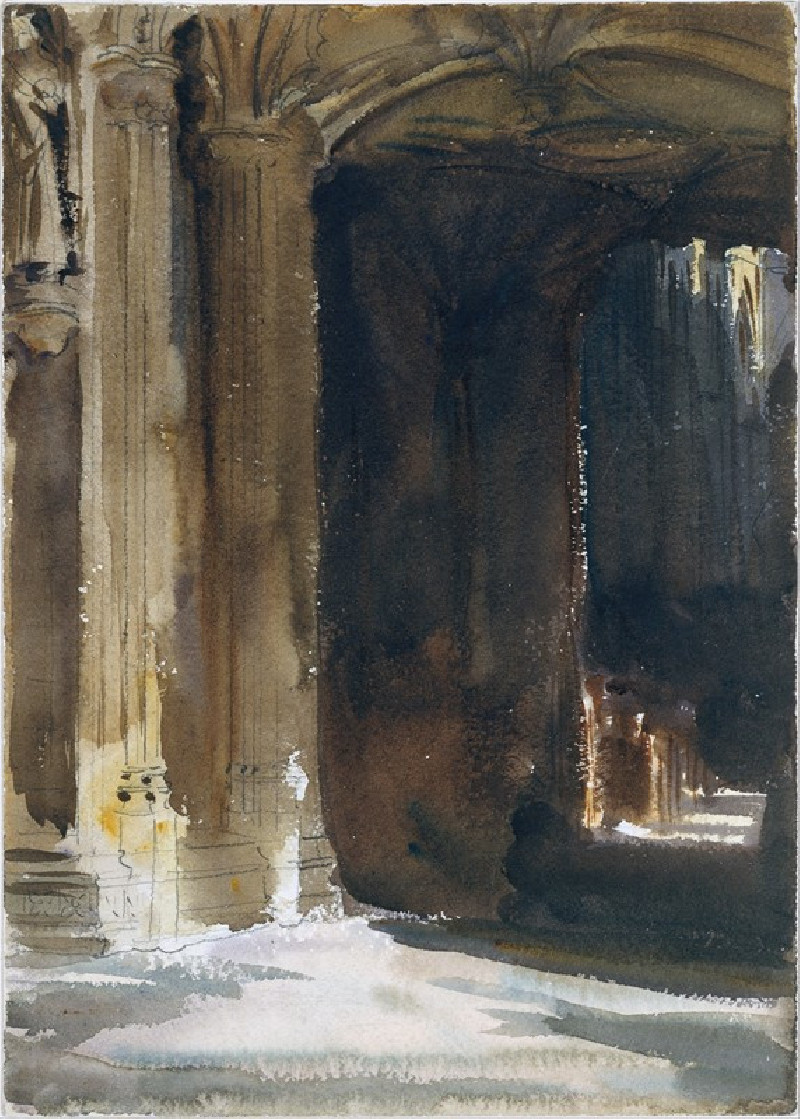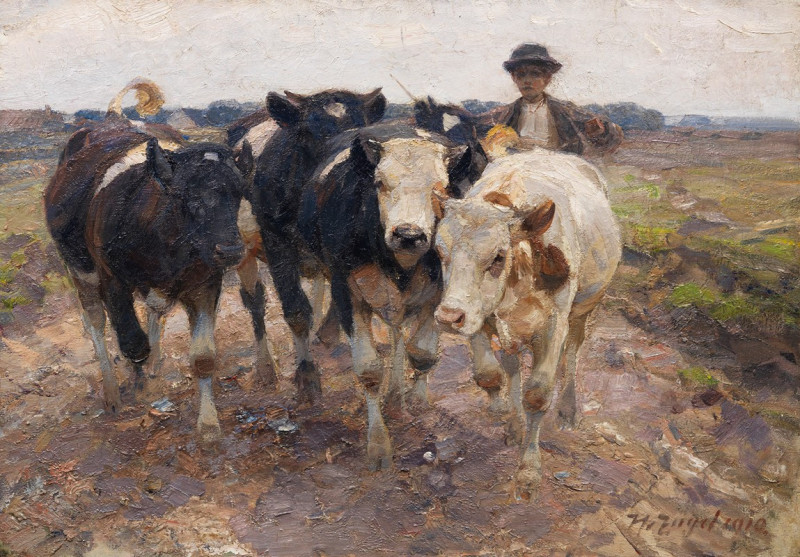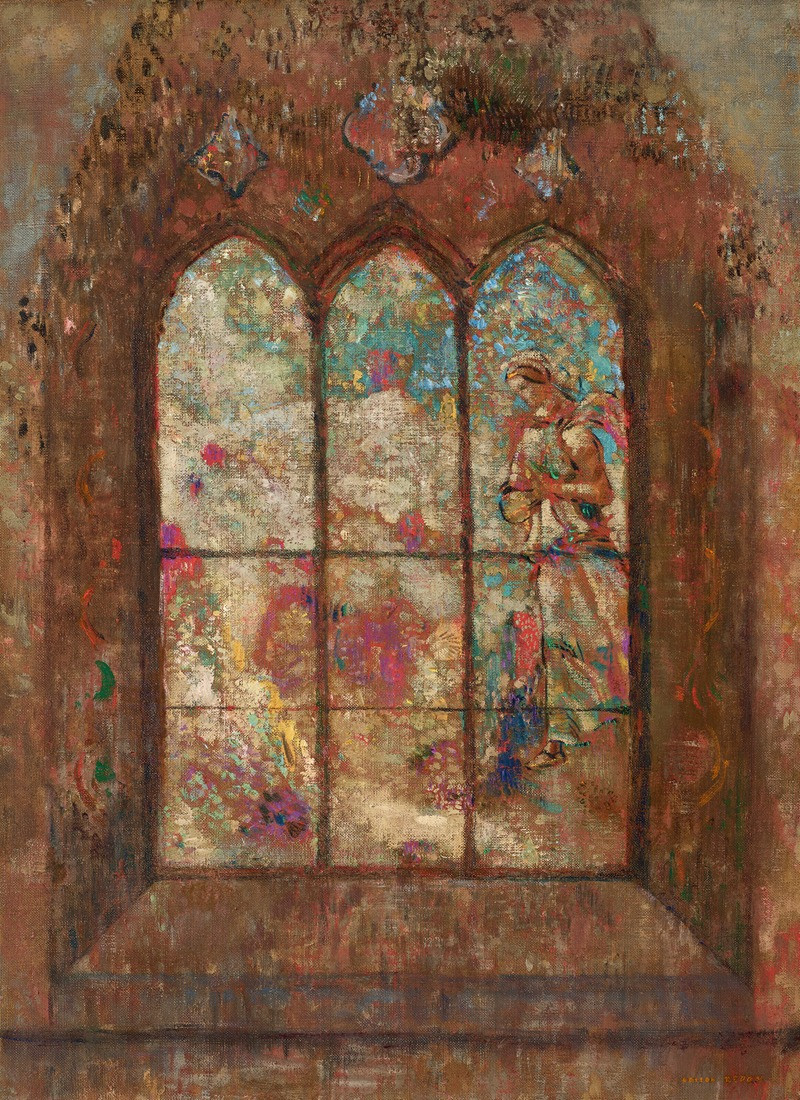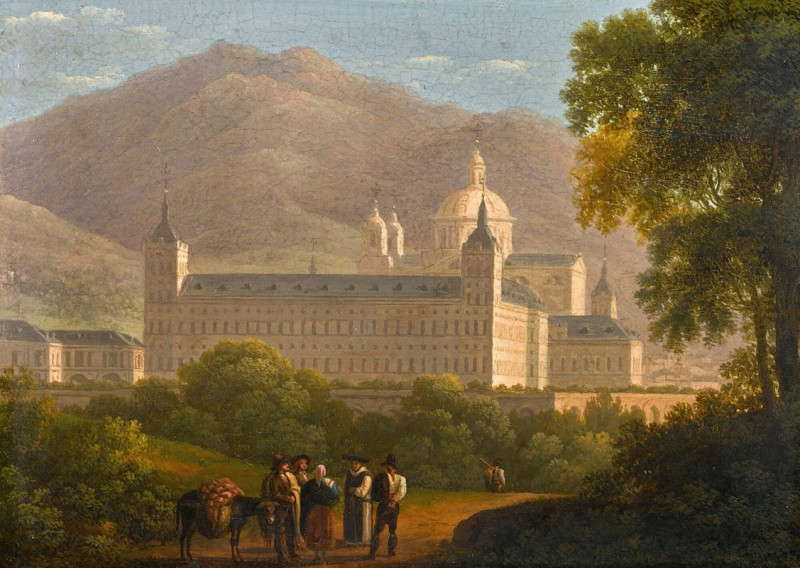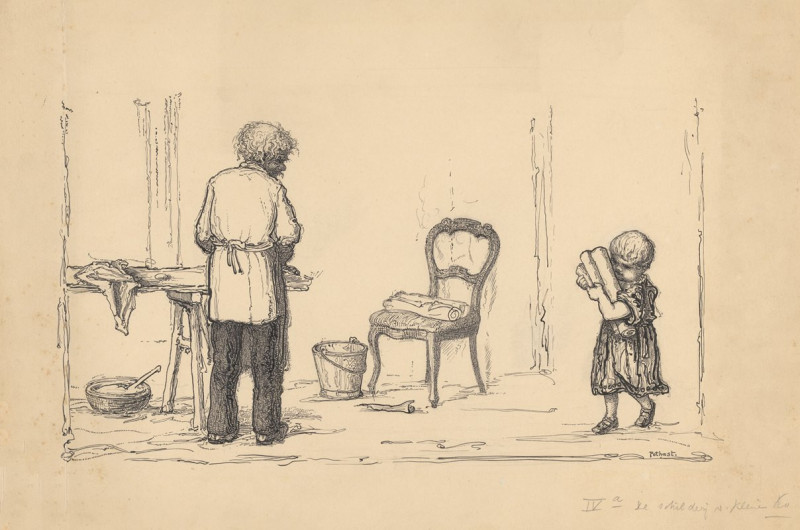Wounded Brigand (Roman Shepherd) (1825)
Technique: Giclée quality print
Recommended by our customers
More about this artwork
"Wounded Brigand (Roman Shepherd)" by Eugène Delacroix (1825) presents a scene that embodies the intensity and pathos typical of Romanticism, a movement in which Delacroix was a leading figure. This striking painting captures the tragic figure of a wounded man sprawled across a wild, desolate landscape. His position is one of despair and exhaustion as he lies face down, his arm extended toward a small pool of water, symbolizing perhaps a last, futile reach for life.The use of light and shadow, combined with a vivid color palette, accentuates the emotional intensity of the scene. The warm hues of the man’s clothing—a white shirt stained with blood and a richly colored red garment—contrast sharply with the cold, barren landscape around him. Delacroix's brushstrokes convey a sense of urgency and rawness, enhancing the drama of the moment.This masterpiece, while showcasing Delacroix's skill in portraying human suffering, also invites viewers to reflect upon themes of vulnerability, defeat, and the harsh realities of human existence.


